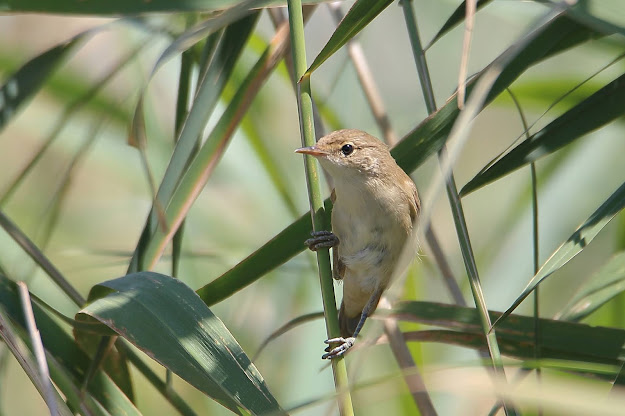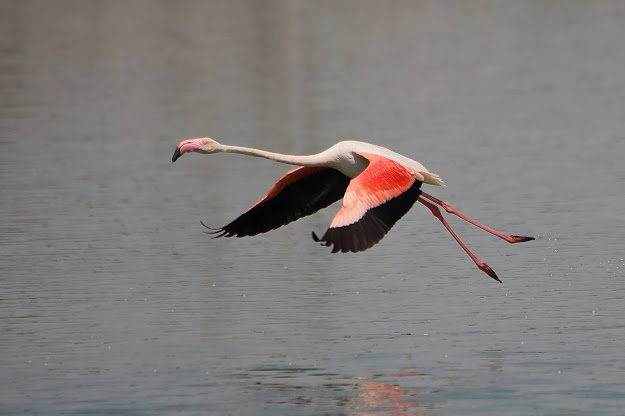Hola una vez más.
Hi again.
Hi again.
En el siguiente enlace podéis ver nuestros próximos viajes fotográficos y de observación de aves y mamíferos nacionales y al extranjero. Espero que os gusten y os animéis a venir conmigo. Una experiencia que nunca olvidareis.
In the following link you can see our next national and foreign Birds and Mammals photographic and observation trips. I hope you like them and I encourage you to come with me. An experience that you will not forget.
Esta vez os muestro lo que pude fotografiar en un viaje a la Mancha Húmeda a finales del mes de Julio.
This time I show you what I was able to photograph on a trip to La Mancha Húmeda at the end of July.
El día fue muy caluroso y nos fuimos pronto de las lagunas pues había 40 ºC.
The day was very hot and we left the lagoons early because it was 40 ºC.
A primera hora me pase por los sembrados para ver aves esteparias.
First thing in the morning, I went through the fields to see steppe birds.
Lo primero que vimos fue un bando de sisones comunes (Tetrax
tetrax). En la foto un macho.
First thing we saw was a flock of Little Bustard. In the photo a male.
Y muy cerca había otro de alcaravanes comunes (Burhinus
oedicnemus). Solo este se quedó para que pudiese tomarle una foto aunque estaba lejos.
And very close there was another of Stone Curlew. Only this one stayed so that I could take a picture of it even though it was far away.
Luego vimos una pareja de ganga ibérica (Pterocles
alchata) y algunas más en vuelo. Una pena que no viese ninguna ganga ortega (Pterocles
orientalis).
Then we saw a couple of Pin-tailed
Sandgrouse and a few more in flight. A pity that I did not see any Black-bellied
Sandgrouse.
Por la zona también estaban las avutardas comunes (Otis
tarda) pero o estaban lejos o salían volando en cuanto veían la furgoneta.
In the area there were also Great Bustards but they were either far away or they flew off as soon as they saw the van.
Pudimos ver varios milanos negros (Milvus
migrans). El de la foto es un joven.
We were able to see several Black Kites. The one in the photo is a Juvenile.
Y también había aguiluchos laguneros occidentales (Circus
aeruginosus). El de la foto es una hembra adulta.
And there were also Eurasian Marsh Harriers. The one in the photo is an adult female.
Al medio día llegamos ya a la zona de las lagunas. Entre las avefrías europeas (Vanellus
vanellus) se podía ver una canastera común (Glareola
pratincola) joven.
At noon we arrived at the lagoon area. Among the Northern Lapwing a juvenile Collared
Pratincole could be seen.
En el centro de la imagen hay un chorlito gris (Pluvialis
squatarola).
In the center of the image there is a gray plover.
Unos andarríos grandes (Tringa
ochropus).
Some Green
Sandpiper.
Como en la primer laguna había muy poca agua, decidí ir a otra que está alimentada por las aguas residuales de una depuradora. Había algunos moritos comunes (Plegadis
falcinellus).
As there was few water in the first lagoon, I decided to go to another that is fed by wastewater from a treatment plant. There were several Glossy
Ibis.
Como podéis apreciar en la foto, hacía ya mucho calor. Joven de abejaruco europeo (Merops
apiaster).
As you can see in the photo, it was already very hot. Juvenile European Bee-eater.
Había un buen bando de ansar común (Anser
anser).
There was a flock of Greylag
Goose.
Y algunos combatientes ( Philomachus
pugnax) que ya estaban de regreso de sus lugares de cría. Los machos aún conservaban algo del plumaje nupcial.
And some Ruff who were already back from their breeding grounds. Males still had some of the breeding plumage.
Andarríos chico (Actitis
hypoleucos).
Common
Sandpiper.
Había bastantes carriceros comunes (Acrocephalus scirpaceus).
There were quite a few Reed Warbler.
Y muchas libélulas. En la foto una libélula emperador (Anax imperator).
And many Dragonflies. In the photo an Emperor Dragonfly.
Esta hembra de tarro blanco (Tadorna
tadorna) tenía siete pollos. No está nada mal.
This female Common Shelduck had seven chicks. It's not bad at all.
Siempre me asombra lo que pueden estirar el cuello los avetorillos comunes (Ixobrychus
minutus) cuando están pescando.
I am always amazed at how much Little
Bittern can stretch their necks when fishing.
Solo vimos hembras o la misma hembra en varias ocasiones.
We only saw females or the same female on several occasions.
Me encantan los flamencos comunes (Phoenicopterus
ruber).
I love Greater
Flamingos.
Y sobre todo cuando los tienes tan cerca. Entonces es cuando mejor puedes apreciar su belleza y elegancia.
And especially when you have them so close. This is when you can best appreciate its beauty and elegance.
Pero en vuelo se aprecia mejor sus llamativos colores.
But in flight its striking colors are better appreciated.
Los subadultos son menos llamativos.
Subadults are less colorful.
Zampullín Común (Tachybaptus
ruficollis).
Little
Grebe.
Un macho de ánade azulón (Anas
platyrhynchos). Durante su muda, pierden la capacidad de volar pues tiran todas las plumas que les sirven para el vuelo el mismo día. Como son más fáciles de depredar, durante esta época tienen lo que se llama el plumaje de eclipse para poder camuflarse mejor y que se asemeja al de las hembras.
A male Mallard. During their molt, they lose the ability to fly as they throw off all the feathers that are used for flight on the same day. As they are easier to prey, during this time they have what is called the eclipse plumage to be able to camouflage themselves better and that resembles that of the females.
Hembra.
Female.
Vimos una garcilla cangrejera (Ardeola
ralloides).
We saw a Squacco Heron.
Un macho de ánade friso (Anas
strepera). Como podéis apreciar le faltan todas las plumas de vuelo. Se que es un macho por el color de su pico que no cambia mucho.
A Gadwall male. As you can see, all the flight feathers are missing. I know it is a male because of the color of its beak that does not change much.
Siempre me sorprende la cantidad de malvasías cabeciblancas (Oxyura
leucocephala) que se pueden ver.
Hay que tener en cuenta que no hace mucho estaban en peligro de extinción. En la foto un macho.
I am always amazed at how many White-headed
Ducks can be seen. Keep in mind that not long ago they were in danger of extinction. In the photo a male.
Es una pena que ya estén perdiendo el intenso color azulado de su pico.
It is a pity that they are already losing the intense bluish color of their beak.
Hembra.
Female.
Hembra con crías.
Female with her ducklings.
También pudimos fotografiar cisticiolas buitrones (Cisticola
juncidis).
We were also able to photograph Zitting
Cisticola.
Garceta común (Egretta
garzetta).
Little
Egret.
Focha común (Fulica
atra).
Common
Coot.
Un calamón común (Porphyrio
porphyrio) se paseó varias veces por delante del observatorio.
A Purple
Swamp-hen passed several times close to the observatory.
Que bonitos son.
How beautiful they are.
También los fumareles cariblancos (Chlidonias
hybridus) estaban perdiendo su plumaje estival.
Also Whiskered
Tern were losing their summer plumage.
Este es un joven.
This is a juvenile.
Había algunos zampullines cuellinegros (Podiceps
nigricollis) aunque me pareció que muchos menos que otros años.
There were some Black-necked Grebes although it seemed to me less than in other years.
There were some Black-necked Grebes although it seemed to me less than in other years.
Y en esta foto con un joven.
And in this photo with a juvenile.
Espero que os haya gustado. Hasta pronto.
I hope you liked it. See you soon.


































































Una pasada las fotos como siempre. Gracias
ResponderEliminarMuchas gracias a ti Gonzalo.
EliminarMe alegro que te hayan gustado las fotos.
Saludos,
Luis
Preciosas las fotos y al flamenco le cogiste en posiciones muy curiosas. Gracias
ResponderEliminarMuchas gracias Isabel.
EliminarMe alegro que te hayan gustado las fotos.
Saludos,
Luis
Pues devió ser un día muy divertido... pese al calor.
ResponderEliminarMuchas gracias Antón.
EliminarSi, fue un dia estupendo.
Saludos,
Luis
Pues devió ser un día muy divertido... pese al calor.
ResponderEliminar